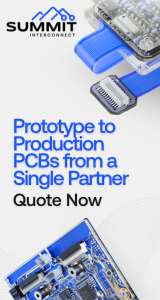|

|
|
| Ask the Experts | |||||||
|
|||||||
|
November 13, 2006 - Updated July 4, 2007 - Originally Posted Flux residue after bakingDoes baking of PCB Assembly @ 125C re-activate the flux that remains on the component surface? We have encountered flux residue accumulating on the connector pins which creates connections problems. How can we prevent this and does cleaning with IPA work as an acceptable cleaning agent? Hamlito Nocete |
|||||||
| Expert Panel Responses | |||||||
|
This depends on the type of flux that is being used. If you are using a no-clean rosin-based flux, these types of residues are often softened during a reheating process that elevates the board temperature to 125 C. The softening of the residue does mean that it will become more mobile and could easily travel down a connector pin. However, just softening the residue does not necessarily mean that something will become reactivated. If the residues are not rosin based, they don't soften and become mobile in the same way. Non-rosin no-clean residues from liquid fluxes are primarily dicarboxylic acids that stay in solid form beyond 125 C. These types of residues would not be reactivated unless they go into some sort of liquid solution, which can happen if water condensation forms on the board. IPA is usually not the best cleaning method for most no-clean fluxes. This is highly dependent on the exact flux formula and should be verified with the manufacturer of the flux.
General Manager - Electronic Assembly Americas DEK International Mr. Smith has been supporting customers in the electronics assembly industry since 1994. His expertise is focused on solder paste printing and reducing soldering defects. He holds a BS in Chemical Engineering and an MBA in Marketing. He has authored several papers in trade magazines and at industry conferences. He is an SMTA Certified Process Engineer.
The main effect is that the flux residues will soften and may flow under gravity. This depends a little on the exact formulation but some fluidity is to be expected. There will be some residual activator in the residues and the resin which makes up the bulk of the residue also has some fluxing action. The metal surfaces under the residues will therefore see some cleaning action to reduce any oxide that has formed but this will be minimal and of no practical consequence. Once the residues cool down, they will behave just like the residue from the original soldering process except that they may be darker in colour and have a slightly higher softening temperature (i e harder and more brittle). Cleaning residues is not normally thought to be necessary unless the physical flow would cause a problem (e g spread onto contact surfaces which seems to be the problem here). IPA is fairly effective but it does depend on the exact chemistry of the residues and the process used for cleaning. Poor cleaning can actually make the system less reliable by removing the resins, which provide an inert conformal coating, while leaving behind insoluble activators. Specific recommendations from the flux supplier should be followed.
Marketing 360-Biz Douglass Dixon is the Chief Marketing Officer for 360 BC Group, a marketing agency with offices throughout the US. 360 BC specializes in consulting and implementing successful marketing programs that utilize the latest in marketing, sales and technology strategies. As an electronics veteran, Dixon has worked in the industry for over 30 years for companies like Henkel, Universal Instruments, Camelot Systems, and Raytheon. Dixon's electronics industry experience includes a broad skill set that includes engineering, field service, applications, product management and marketing communications expertise.
Reader Comment
Insightful read—clear advice on how IPA works as a cleaning agent—plus a solid reminder to follow flux supplier guidance to avoid stripping beneficial resin coatings.
Saveplus
|
|||||||
| Submit A Comment | |||||||
|
Comments are reviewed prior to posting. You must include your full name to have your comments posted. We will not post your email address. |
|
Free Newsletter Subscription
Circuitnet is built for professionals who bear the responsibility of looking ahead, imagining the future, and preparing for it. Insert Your Email Address |
|

|




